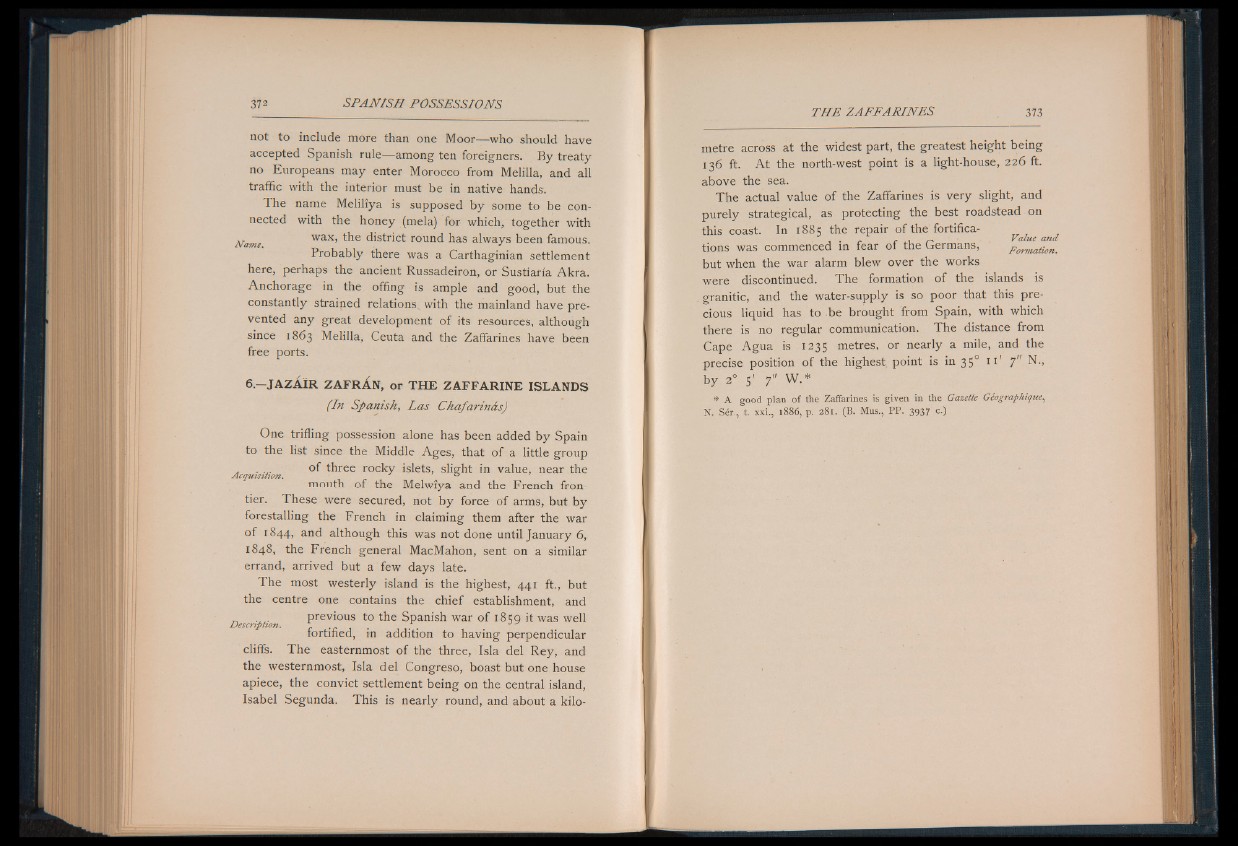
not to include more than one Moor— who should have
accepted Spanish rule— among ten foreigners. By treaty
no Europeans may enter Morocco from Melilla, and all
traffic with the interior must be in native hands.
The name Meliliya is supposed by some to be connected
with the honey (mela) for which, together with
Name wax, the district round has always been famous.
Probably there was a Carthaginian settlement
here, perhaps the ancient Russadeiron, or Sustiaria Akra.
Anchorage in the offing is ample and good, but the
constantly strained relations^ with the mainland have prevented
any great development of its resources, although
since 1863 Melilla, Ceuta and the Zaffarines have been
free ports.
6.—JAZAIR ZAFRAN, or THE ZAFFARINE ISLANDS
(In Spanish, Las Chafarinds)
One trifling possession alone has been added by Spain
to the list since the Middle Ages, that of a little group
. . of three rocky islets, slight in value, near the Acquisition. 0
mouth of the Melwiya and the French fron-
tier. These were secured, not by force of arms, but by
forestalling the French in claiming them after the war
of 1844, and although this was not done until January 6,
1848, the French general MacMahon, sent on a similar
errand, arrived but a few days late.
The most westerly island is the highest, 441 ft., but
the centre one contains the chief establishment, and
. , previous to the Spanish war of 18 eg it was well
Description. r -r • • .
fortified, in addition to having perpendicular
cliffs. The easternmost of the three, Isla del Rey, and
the westernmost, Isla del Congreso, boast but one house
apiece, the convict settlement being on the central island,
Isabel Segunda. This is nearly round, and about a kilometre
across at the widest part, the greatest height being
136 ft. A t the north-west point is a light-house, 226 ft.
above the sea.
The actual value of the Zaffarines is very slight, and
purely strategical, as protecting the best roadstead on
this coast. In 1885 the repair of the fortifica-
. c 1 /-» Value and
tions was commenced in fear of the Germans, Formation.
but when the war alarm blew over the works
were discontinued. The formation of the islands is
granitic, and the water-supply is so poor that this precious
liquid has to be brought from Spain, with which
there is no regular communication. The distance from
Cape Agua is 1235 metres, or nearly a mile, and the
precise position of the highest point is in 350 11' 7" N.,
by 2° s' 7" W.*
* A good plan of the Zaffarines is given in the Gazette Géographique,
N. Sér., t. xxi., 1886, p. 281. (B. Mus., PP. 3937 c.)